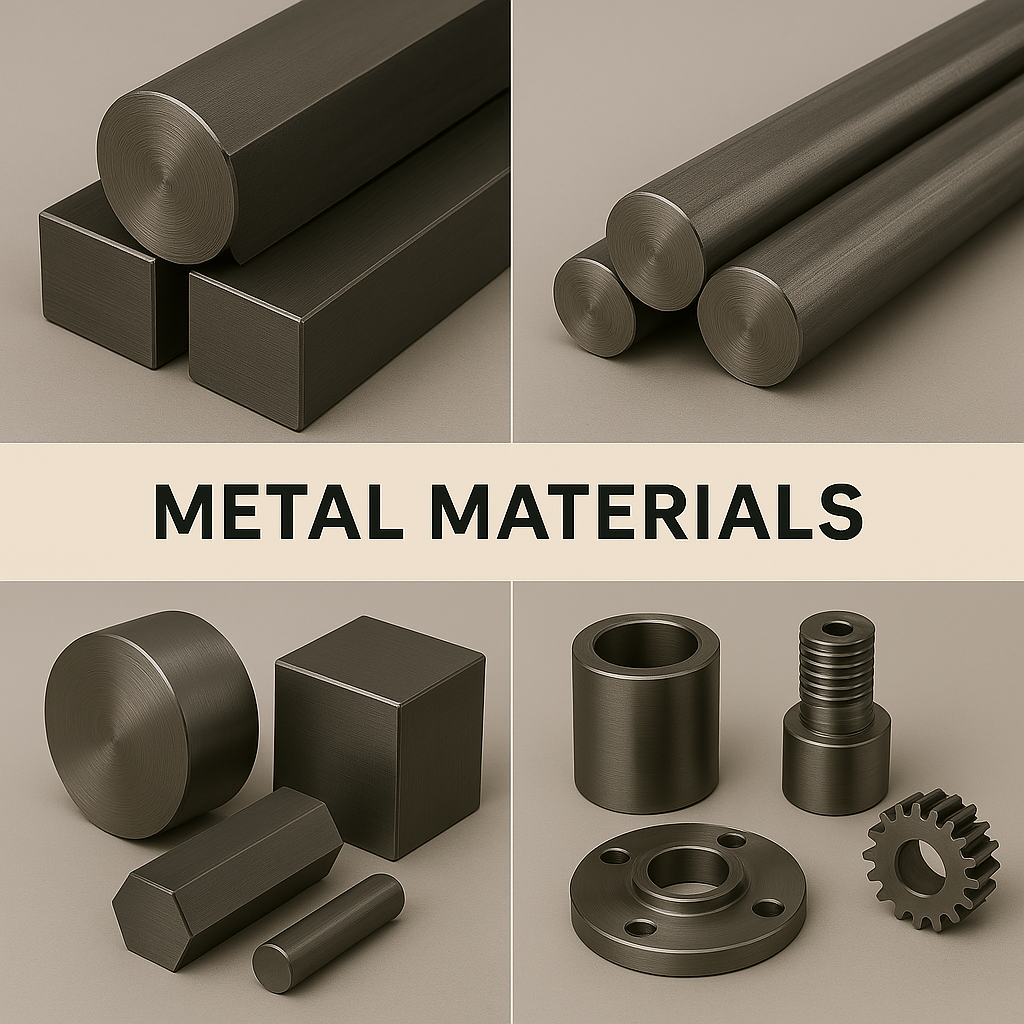In precision machining, one size doesn’t fit all. The type of metal you’re working with has a big impact on how you cut, drill, or shape it.
Different metals have different properties, and each requires its own machining strategy to get the best results.
Why Metal Type Matters
Every metal behaves differently when being machined because of things like:
Hardness — how hard or soft the metal is.
Strength — how much force it can take without breaking.
Ductility — how easily it bends or stretches.
Heat Conductivity — how well it handles heat during cutting.
Choosing the right machining approach for each metal is important to:
Protect cutting tools from wearing out too fast.
Get smooth, accurate surfaces.
Prevent defects like cracks or rough edges.
Common Metals and Their Machining Characteristics
1. Aluminum
Easy to cut, but soft and prone to sticking on cutting tools (this is called “built-up edge”).
Generates less heat, so high cutting speeds can be used.
Sharp tools and special coatings (like TiN or DLC) help prevent sticking.
2. Stainless Steel
Harder and tougher than aluminum.
Generates more heat during cutting.
Requires slower cutting speeds and stronger, heat-resistant tools (like carbide).
Coolant is often needed to control heat and avoid tool damage.
3. Titanium
Very strong but lightweight — widely used in aerospace and medical parts.
Poor heat conductivity, so heat builds up quickly at the cutting point.
Needs slow speeds, light cuts, and sharp tools to avoid overheating and tool wear.
Often uses special coatings to reduce friction.
4. Copper and Brass
Soft, ductile metals, generally easy to machine.
Copper can cause tool wear because of its stickiness.
Brass machines very well and is often used for small, detailed parts.
5. Hardened Steel
Extremely hard, often used in molds, tools, or high-strength parts.
Needs rigid machines, tough tools (like ceramic or coated carbide), and very careful settings.
Usually requires low speeds and shallow cuts to avoid damaging tools.
Adjusting Machining Strategies
Because metals behave so differently, machinists adjust their strategies for each one:
Tool Selection: Choosing tools made from materials that can handle the job (carbide, high-speed steel, ceramic, etc.).
Cutting Speed and Feed Rate: Balancing speed and force to get a good surface while protecting the tool.
Coolant Use: Managing heat, especially for metals that don’t conduct heat well.
Tool Path Planning: Deciding how the machine moves to minimize stress on both the part and the tool.
Summary
In precision machining, knowing your material is just as important as knowing your machine. Each metal comes with its own challenges, but with the right strategy, it’s possible to create high-quality, accurate parts every time.
Understanding how different metals behave helps machinists choose the best tools, speeds, and techniques — and that leads to better products, longer tool life, and lower costs.
Please get more information, please visit our CNC Turning Parts or Products.
Contact us for your customized metal parts.
